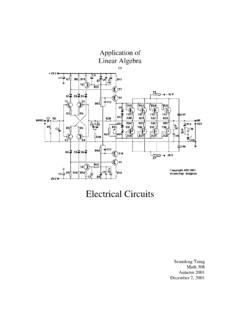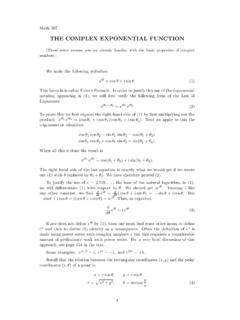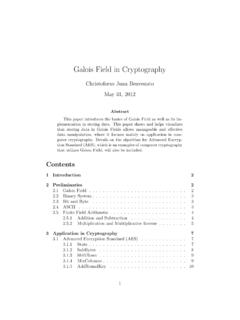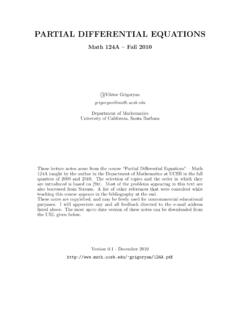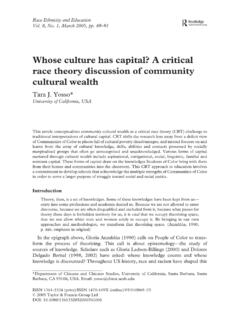Transcription of VARIATIONAL ANALYSIS - University of Washington
1 VARIATIONAL ANALYSIS . R. Tyrrell Rockafellar Roger J-B Wets with figures drawn by Maria Wets 1997, 2nd printing 2004, 3rd printing 2009. PREFACE. In this book we aim to present, in a uni ed framework, a broad spectrum of mathematical theory that has grown in connection with the study of prob- lems of optimization, equilibrium, control, and stability of linear and nonlinear systems. The title VARIATIONAL ANALYSIS re ects this breadth. For a long time, VARIATIONAL ' problems have been identi ed mostly with the calculus of variations'. In that venerable subject, built around the min- imization of integral functionals, constraints were relatively simple and much of the focus was on in nite-dimensional function spaces.
2 A major theme was the exploration of variations around a point, within the bounds imposed by the constraints, in order to help characterize solutions and portray them in terms of VARIATIONAL principles'. Notions of perturbation, approximation and even generalized di erentiability were extensively investigated. VARIATIONAL theory progressed also to the study of so-called stationary points, critical points, and other indications of singularity that a point might have relative to its neighbors, especially in association with existence theorems for di erential equations. With the advent of computers, there has been a tremendous expansion of interest in new problem formulations that similarly demand such modes of ANALYSIS but are far from being covered by classical concepts, not to speak of classical results.
3 For those problems, nite-dimensional spaces of arbitrary dimensionality are important alongside of function spaces, and theoretical con- cerns go hand in hand with the practical ones of mathematical modeling and the design of numerical procedures. It is time to free the term VARIATIONAL ' from the limitations of its past and to use it to encompass this now much larger area of modern mathematics. We see variations' as referring not only to movement away from a given point along rays or curves, and to the geometry of tangent and normal cones associated with that, but also to the forms of perturbation and approximation that are describable by set convergence, set-valued mappings and the like. Subgradients and subderivatives of functions, convex and nonconvex, are crucial in analyzing such variations', as are the manifestations of Lipschitzian continuity that serve to quantify rates of change.
4 Our goal is to provide a systematic exposition of this broader subject as a coherent branch of ANALYSIS that, in addition to being powerful for the problems that have motivated it so far, can take its place now as a mathematical discipline ready for new applications. Rather than detailing all the di erent approaches that researchers have been occupied with over the years in the search for the right ideas, we seek to reduce the general theory to its key ingredients as now understood, so as to make it accessible to a much wider circle of potential users. But within that consolidation, we furnish a thorough and tightly coordinated exposition of facts and concepts. Several books have already dealt with major components of the subject.
5 Some have concentrated on convexity and kindred developments in realms of nonconvexity. Others have concentrated on tangent vectors and subderiva- tives more or less to the exclusion of normal vectors and subgradients, or vice versa, or have focused on topological questions without getting into general- ized di erentiability. Here, by contrast, we cover set convergence and set-valued mappings to a degree previously unavailable and integrate those notions with both sides of VARIATIONAL geometry and subdi erential calculus. We furnish a needed update in a eld that has undergone many changes, even in outlook. In addition, we include topics such as maximal monotone mappings, generalized second derivatives, and measurable selections and integrands, which have not ii in the past received close attention in a text of this scope.
6 (For lack of space, we say little about the general theory of critical points, although we see that as a close neighbor to VARIATIONAL ANALYSIS .). Many parts of this book contain material that is new not only in its manner of presentation but also in research. Each chapter provides motivations at the beginning and throughout, and each concludes with extensive notes which furnish credits and references together with historical perspective on how the ideas gradually took shape. These notes also explain the reasons for some of the decisions about notation and terminology that we felt were expedient in streamlining the subject so as to prepare it for wider use. Because of the large volume of material and the challenge of unifying it properly, we had to draw the line somewhere.
7 We chose to keep to nite- dimensional spaces so as not to cloud the picture with the many complications that a treatment of in nite-dimensional spaces would bring. Another reason for this choice was the fact that many of the concepts have multiple interpretations in the in nite-dimensional context, and more time may still be needed for them to be sorted out. Signi cant progress continues, but even in nite-dimensional spaces it is only now that the full picture is emerging with clarity. The abun- dance of applications in nite-dimensional spaces makes it desirable to have an exposition that lays out the most e ective patterns in that domain, even if, in some respects, such patterns are not able go further without modi cation.
8 We envision that this book will be useful to graduate students, researchers and practitioners in a range of mathematical sciences, including some front-line areas of engineering and statistics that draw on optimization. We have aimed at making available a handy reference for numerous facts and ideas that cannot be found elsewhere except in technical papers, where the lack of a coordinated terminology and notation is currently a formidable barrier. At the same time, we have attempted to write this book so that it is helpful to readers who want to learn the eld, or various aspects of it, step by step. We have provided many gures and examples, along with exercises accompanied by guides. We have divided each chapter into a main part followed by sections marked by , so as to signal to the reader a stage at which it would be reasonable, in a rst run, to skip ahead to the next chapter.
9 The results placed in the sections are often important as well as necessary for the completeness of the theory, but they can suitably be addressed at a later time, once other developments begin to draw on them. For updates and errata, see rjbw. Acknowledgment. We are grateful for all the assistance we have received in the course of this project. The gures were computer-drawn and ne-tuned by Maria Wets, who also in numerous other ways generously gave technical and logistical support. For the rst printing, help with references was provided by Alexander Io e, Boris Mordukhovich, and Rene Poliquin, in particular. Lisa Korf was extraor- dinarily diligent in reading parts of the manuscript for possible glitches.
10 Useful feedback came not only from these individuals but many others, including Amir Abdessamad, Hedy Attouch, Jean-Pierre Aubin, Gerald Beer, Michael Casey, Xiaopeng M. Dong, Asen Dontchev, He le ne Frankowska, Grant Galbraith, Rafal Goebel, Rene Henrion, Alejandro Jofre , Claude Lemare chal, Adam Levy, Teck Lim, Roberto Lucchetti, Juan Enrique Martinez-Legaz, Madhu Nayakkankuppam, Vicente Novo, Georg P ug, Werner Ro misch, Chengwu Shao, Thomas Stro mberg, and Kathleen Wets. The chapters on set convergence and epi-convergence bene ted from the scrutiny of a seminar group consisting iii of Gu l Gu rkan, Douglas Lepro, Yonca O zge, and Stephen Robinson. Conver- sations we had over the years with our students and colleagues contributed signi cantly to the nal form of the book as well.
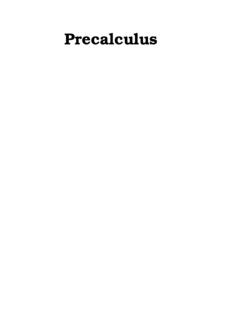

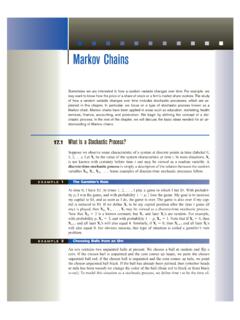
![ZZ dA R [0 2] R - University of Washington](/cache/preview/6/4/c/c/9/f/d/6/thumb-64cc9fd6ac93e2995c04a2a74b217176.jpg)

